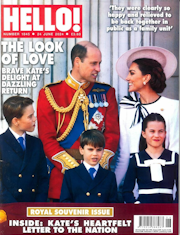Luschka from Diary of a First Child tells us how the layout of StoryBox magazine helps it appeal to a variety of ages.

My girls have been enjoying their StoryBox magazine subscription and one of the things that I think really appeals to them in this series is the variety. Each magazine employs a range of storytelling mechanisms.
Now, I'm no publisher, so I don't know the technical terms for the way magazines are laid out on a page, but that doesn't stop me or the children from noticing the values in each style. Just taking the latest issue as an example, these are some of the formats:
Classic children's book
The first style is like any children's book you'll find in a bookstore or library. With 10 to 20 pages of story, complete with beautiful bold images, you'd be forgiven for thinking this was a regular story book.
This is fantastic as it combines the ease of a 'magazine' with the formality of a book'. It introduces hesitant readers to a longer story without being intimidating. If I give my five-year-old a 20-page book to read, she'll tell me that it's too long and she can't, but give her a magazine where one of the stories is just 20 pages long and it doesn't seem to be a problem and she can read the whole thing. It's all in the perspective.
Regular magazine
There are pages that are laid out like a regular magazine, with a full page of information overlayed with the image — in one case about sun cream and why it's necessary. I think this break from left to right, top to bottom, full page text is really good for the developing reader too. It requires some use of logic and understanding of the written word so that you know where to go next to continue reading. Plus, from an educational point of view it's perfectly bite-sized so as not to be boring.
Comic strips
Comic strips themselves come in a variety of guises, from the full ‘splash’ page, to half-page strips, to the well known and used cartoon or comic strips. Irrespective of how the comic is laid out, it requires comprehension to read, so that you know how to mentally ‘figure out’ who says what in what order, or what the correct sequence of the story is. It's like Tetris for the brain, and you're not even aware that you're doing it.
Professor Carol Tilley, from the Department of Library and Information Science, actually researched the educational value of comics for kids and said ‘if you really consider how the pictures and words work together to tell a story, you can make the case that comics are just as complex as any other kind of literature’. This makes comics a great starting point for reluctant readers.
This mix and match of layout styles makes StoryBox appeal to a range of ages and interests, because if there's something a young reader isn't overly engaged in, they can just turn a few pages on and find something that might suit them more.
As adults, it's easy to dismiss cartoons for kids as lazy reading, but it's just another way of doing it. I know I loved Archie and Betty comics as much as the next guy as a kid, and yet here I am an avid reader, so clearly it can't be all bad!
Struggling to get your kids reading? Try something different with a StoryBox magazine subscription.
Image via US Department of Education






